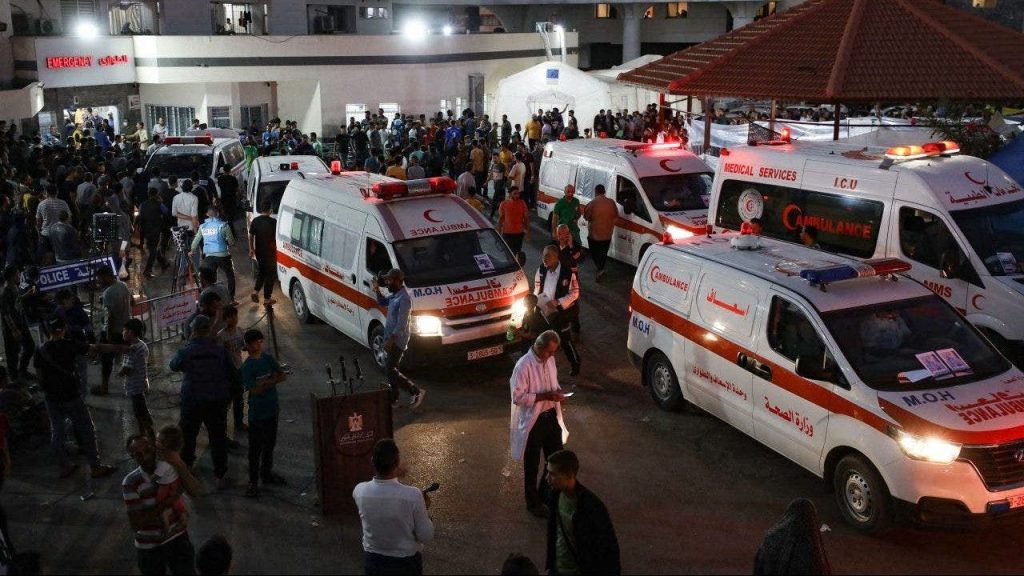A recent report by the Henry Jackson Society (HJS), a UK think tank, has cast serious doubt on the accuracy of casualty figures reported by the Hamas-run Gaza Ministry of Health (MoH) during the ongoing conflict. The report alleges a litany of errors and distortions in the MoH’s data collection process, leading to a significantly inflated and misleading picture of the conflict’s impact. This inflated data has been widely disseminated by international media outlets with little to no critical scrutiny, perpetuating a skewed narrative of the conflict. The HJS study highlights the stark contrast between the uncritical acceptance of MoH figures and the skepticism often directed at Israeli casualty reports.
The HJS research, led by Andrew Fox, analyzed MoH casualty lists disseminated via Telegram and compared them with data from the UN Office for the Coordination of Humanitarian Affairs. Despite the difficulty of verifying constantly changing data, the HJS team identified numerous inconsistencies and anomalies. One of the most striking discrepancies relates to the proportion of women and children among the reported casualties. The MoH has consistently claimed that women and children constitute over half of the deaths, fueling accusations of intentional targeting of civilians by Israel. However, this claim contradicts the pre-war demographic distribution of Gaza, where adult males comprised approximately 26% of the population. The HJS analysis revealed a significantly higher proportion of adult male deaths, challenging the narrative of indiscriminate Israeli attacks.
Further investigation uncovered instances of improper casualty recording, including misclassification of gender and age. Men were listed as women, and adults were recorded as children, artificially inflating the reported numbers of female and child casualties. The study also examined the different sources contributing to the MoH data: hospital records before the network breakdown in November 2023, family member submissions, and “media sources.” A comparative analysis revealed significant discrepancies between these sources, with hospital records exhibiting a disproportionately high number of women and children compared to family member reports, suggesting potential biases in hospital data collection.
The MoH’s methodology also fails to account for natural deaths, which average around 5,000 annually in Gaza. Moreover, the casualty figures do not exclude deaths unrelated to Israeli military action, including individuals allegedly killed by Hamas. One example cited in the report is the case of a 13-year-old boy reported killed by Hamas in December 2023 over a food aid dispute, yet appearing on the MoH casualty list attributed to the conflict. The figures also omit deaths caused by Hamas rockets misfiring within Gaza, estimated to be around 1,750. Adding another layer of inaccuracy, the MoH lists include individuals who died before the conflict began, and even cancer patients listed for medical evacuation were erroneously reported as casualties.
A crucial flaw in the MoH data is the lack of distinction between combatants and civilians. While the HJS study estimates that Israeli forces killed approximately 17,000 Hamas terrorists, their research suggests the actual number could be as high as 22,000. The HJS estimates that roughly 15,000 of the total deaths are women and children, while another 7,500 are non-combatant adult males. Fox acknowledges the inherent challenges of data collection in a war zone, but emphasizes that the volume and nature of the MoH’s errors, whether intentional or unintentional, render the data unreliable.
Despite the clear questions surrounding the MoH’s data, the HJS survey found that an overwhelming majority of media outlets, 98%, relied on these figures when reporting on the conflict, compared to only 5% that cited Israeli figures. Even more concerning, fewer than 2% of articles acknowledged the unverifiable nature of the MoH data, while half of the articles that included Israeli statistics questioned their credibility. This stark contrast underscores a significant bias in media reporting, where unverified data from one side is readily accepted, while data from the other side is met with skepticism, regardless of its source. Fox highlights a recent article from a British broadcaster as a prime example of this bias. The article cites the MoH’s inflated figure of 45,000 deaths without any critical analysis or mention of the data’s questionable reliability, effectively echoing the MoH narrative. This uncritical acceptance of potentially flawed data highlights a systemic problem in conflict reporting, where accuracy and impartiality are often sacrificed for sensationalism and pre-existing narratives.

